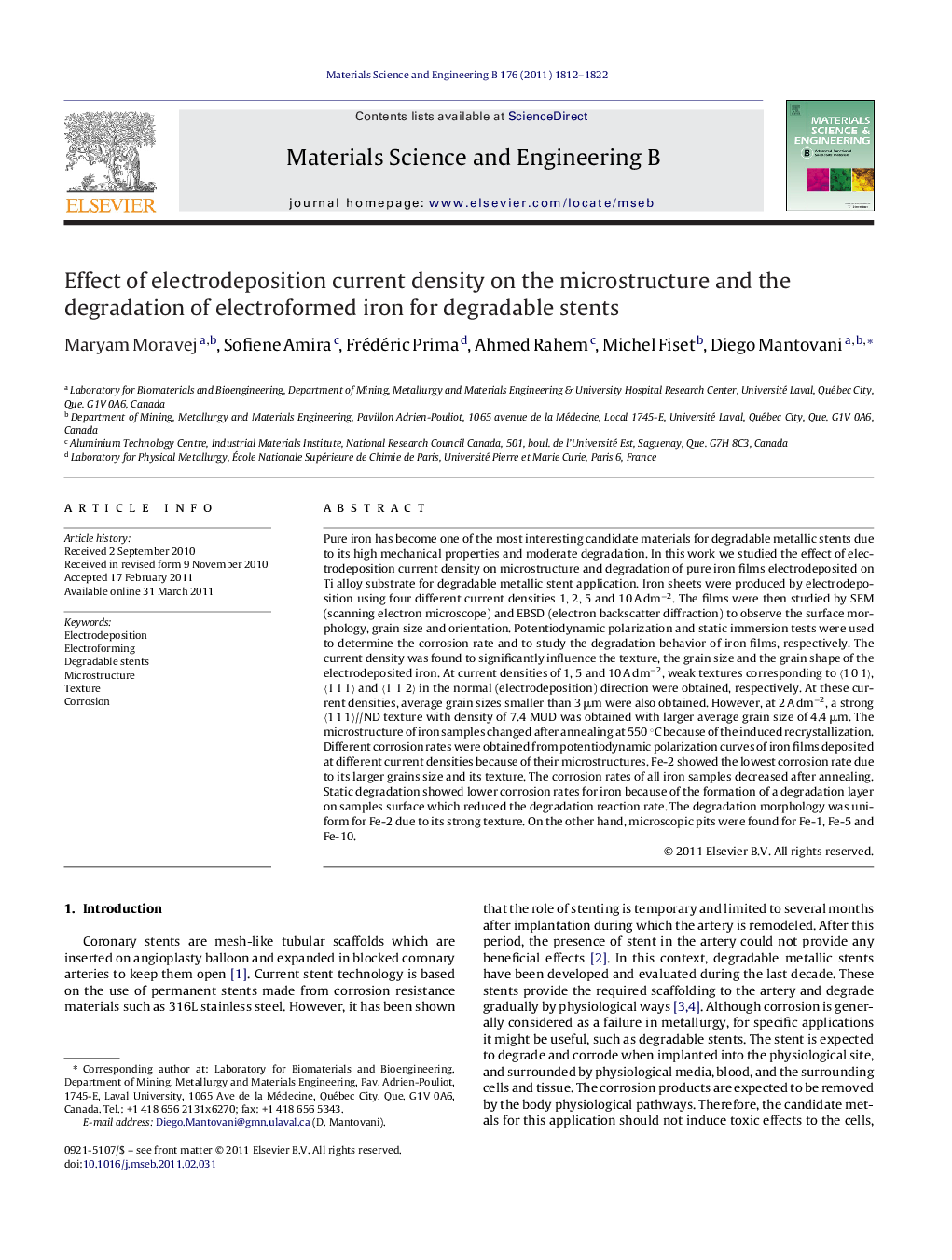| کد مقاله | کد نشریه | سال انتشار | مقاله انگلیسی | نسخه تمام متن |
|---|---|---|---|---|
| 1529555 | 995759 | 2011 | 11 صفحه PDF | دانلود رایگان |

Pure iron has become one of the most interesting candidate materials for degradable metallic stents due to its high mechanical properties and moderate degradation. In this work we studied the effect of electrodeposition current density on microstructure and degradation of pure iron films electrodeposited on Ti alloy substrate for degradable metallic stent application. Iron sheets were produced by electrodeposition using four different current densities 1, 2, 5 and 10 A dm−2. The films were then studied by SEM (scanning electron microscope) and EBSD (electron backscatter diffraction) to observe the surface morphology, grain size and orientation. Potentiodynamic polarization and static immersion tests were used to determine the corrosion rate and to study the degradation behavior of iron films, respectively. The current density was found to significantly influence the texture, the grain size and the grain shape of the electrodeposited iron. At current densities of 1, 5 and 10 A dm−2, weak textures corresponding to 〈1 0 1〉, 〈1 1 1〉 and 〈1 1 2〉 in the normal (electrodeposition) direction were obtained, respectively. At these current densities, average grain sizes smaller than 3 μm were also obtained. However, at 2 A dm−2, a strong 〈1 1 1〉//ND texture with density of 7.4 MUD was obtained with larger average grain size of 4.4 μm. The microstructure of iron samples changed after annealing at 550 °C because of the induced recrystallization. Different corrosion rates were obtained from potentiodynamic polarization curves of iron films deposited at different current densities because of their microstructures. Fe-2 showed the lowest corrosion rate due to its larger grains size and its texture. The corrosion rates of all iron samples decreased after annealing. Static degradation showed lower corrosion rates for iron because of the formation of a degradation layer on samples surface which reduced the degradation reaction rate. The degradation morphology was uniform for Fe-2 due to its strong texture. On the other hand, microscopic pits were found for Fe-1, Fe-5 and Fe-10.
Journal: Materials Science and Engineering: B - Volume 176, Issue 20, 15 December 2011, Pages 1812–1822